2016: The Golden Age of TV Tech
The big TV manufacturers have got quite a year planned for us
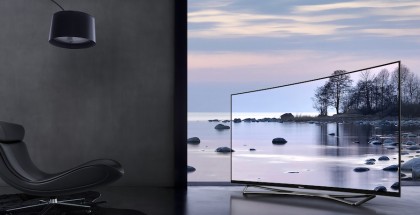
All the fun of the... trade show
You might be feeling like there's a big hole in your life right now. Christmas has been and gone, the New Year festivities are a distant memory – and the doors have closed on the Consumer Electronics Show in Las Vegas for another year.
After all the build-up, all the hype and all the excitement, it's all over.
But don't think of this as an ending – think of it as a bright new beginning. CES 2016 has taught us a great deal about what's going to happen in this new golden age of TV, and 2016 promises to be a formative year.
In 2015 we saw the first flushes of our ultra high-def future, but 2016 will see the tech thrust firmly into the mainstream as more and more 4K TVs find their way into in our homes, and UHD content really ramps up online and on physical media.
But this is about more than just throwing extra pixels onto screens – we're also going to see better pixels as high dynamic range comes to the fore. HDR is the perfect foil for 4K, delivering greater depth of colour as well as more vibrancy for ever-more-realistic images.
These twin pillars of visual fidelity will mark out 2016 as one of the biggest years in television tech history. So what do the next 12 months have in store from all the big names in TV?
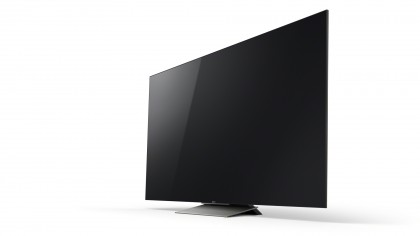
Sony: HDR all the way
Sony has announced its 2016 range of HDR-compatible TVs, all set to be available early this year. There are three new models – the high-end Sony XBR-X940D, the smaller Sony XBR-X930D and the Sony XBR-X850D series.
That top TV is a 75-inch slimline beast with a full-array direct LED backlighting system, while the XBR-X930D series comes in 55 and 65-inch screen sizes with Sony's new Slim Backlight Drive tech. This uses a grid array backlighting system, which promises more precise lighting for specific zones while maintaining a seriously slim chassis.
The XBR-X850D series doesn't have such fancy new backlighting systems, but comes in a broader range of sizes, with 55, 65, 75 and 85-inch models available this year.
All three ranges use Sony's Triluminos display tech, with HDR compatibility across the board. They all come with the excellent 4K Processor X1 silicon too, although the news that Sony is sticking with Android TV may not be as welcome.
Fingers crossed the new Sony TVs get the Android Marshmallow update soon to improve the experience, and let's hope the sadly-lacking Android TV app library gets a boost this year too.
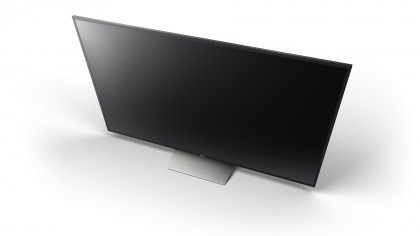
Master plan
Sony also had its next generation of displays on show at CES this year, with early prototypes of its Backlight Master Drive (BMD) technology. This is Sony's response to OLED, which it hopes will build on the strengths of LCD displays while negating its faults.
The biggest strength of LCD is its relative brightness, and the new BMD prototype certainly has near-blinding levels of luminance. The display is capable of peaking at 4,000 nits of brightness, while the best current LCDs are around 1,000 nits, with OLEDs around 400 nits at best.
Sony is promising an exponential increase in the number of dimming zones, numbering over a thousand, for its new backlighting technology. With that sort of granular approach you could recognise an image from the highlights and lowlights presented by the backlight panel alone.
The first Backlight Master Drive TVs are to be launched over the next few years, potentially giving Sony a genuine challenger to the power of OLED.
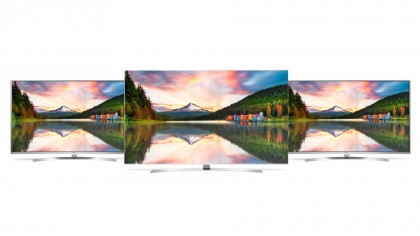
LG: All about the OLED
Inevitably, the big noises coming out of CES from the Korean display giant were about its powerful OLED technology. So far those self-emissive pixels have created the best HDR panels in the TV world, even if it seems like Panasonic's CZ950 series TVs have taken those panels and made them even better.
LG is kicking on, and releasing a whole slew of new HDR-ready OLED TVs this year. Interestingly though, of the four different new OLED series TVs, only one of them (the C6 series) will come sporting the divisive curved display.
Considering it was the other way around for most of OLED's LG life – with only a solitary OLED flatscreen version having come out of its factories – that's quite the turnaround.
Each of the new ranges comes in 55 and 65-inch sizes, with the top-of-the-line G6 and E6 series TVs sporting the gorgeous new Picture-On-Glass flatscreen design, measuring just 2.57mm thick.
The G6 and E6 series also come with a forward-firing Harman Kardon soundbar in the base.
LG isn't just relying on its OLED panels to deliver the HDR goods, however – it's also jumped into bed with Dolby to enable Dolby Vision HDR on its sets, as well as the now-traditional HDR10 standard used by Amazon, and soon Netflix, for HDR content.
The most exciting thing about Dolby Vision is that it's the HDR format used for Star Wars: The Force Awakens – so when that tips up on Ultra HD Blu-ray you're going to want to watch it on a new LG OLED TV.
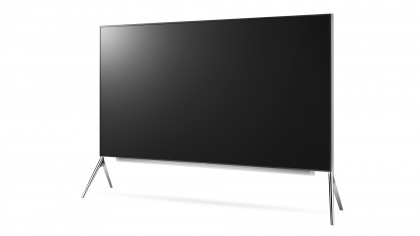
8K on the way
Not content with a measly 8.3 million pixels in its Ultra HD panels, LG was also showing off a 98-inch 8K TV that looks like it might actually get a commercial release this year.
The LG 98UH9800 has a native 8K resolution of 7680 x 4320, with a staggering 33.2 million pixels – even when that's stretched over 98 inches it makes for a stunning image.
Sadly it's not an OLED panel, although LG is promising that it'll still have the necessary chops for HDR, despite using more traditional LED backlighting.
It's also set to be the first TV to launch sporting the new Super MHL connection. The new interconnect is capable of delivering 8K content at speeds of up to 120fps.
Unfortunately, LG has remained typically elusive on exact timings and pricing – but don't anticipate that just because it's not OLED it won't be frighteningly expensive.
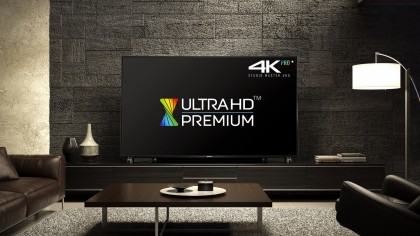
Panasonic: All the certification you can get
Despite producing arguably the finest TV around right now, based on LG's OLED tech, Panasonic is going back to its LCD roots with its 2016 DX900 TVs. But that doesn't mean its new Ultra HD TVs aren't capable of some impressive HDR goodness, because the new DX900s are rocking the Honeycomb.
Panasonic's latest TVs have been created using its new Honeycomb structure to ensure the locally-dimmed areas of the screen are kept completely isolated from each other. This has been done in order to minimise the dreaded LED backlit halo effect, greatly enhancing contrast levels for our HDR future.
Panasonic is promising luminance peaks of up to 1,000 nits, while having deep black images in close proximity.
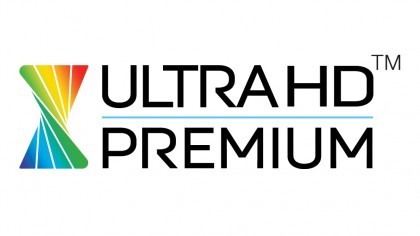
The independent classification bodies seem to agree, as the DX900s have picked up certification from THX and also come with Ultra HD Alliance's new Ultra HD Premium badge. That should mean these 65 and 58-inch panels will deliver some pretty exceptional HDR imagery.
The Panasonic DX900 TVs are still sporting the Firefox OS software, which is all set for both Amazon HDR and the soon-to-be-unveiled Netflix HDR streams.
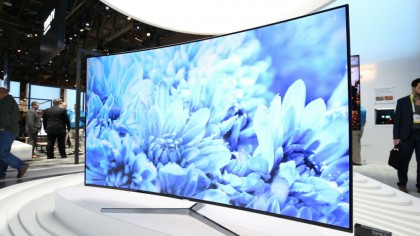
Samsung: Curved after all
Inevitably, Samsung is sticking to its curved TV guns, and its 2016 lineup of Ultra HD TVs starts with the curvy flagship KS9500 SUHD. It's also sticking to its own Quantum Dot nanocrystal filter, rather than dipping back into the OLED duel with Korean rivals LG.
The new 10-bit Quantum Dot SUHD panel in the KS9500 is able to display around one billion possible colours, enabling it to produce incredibly vivid, life-like images as well as the contrast necessary for today's HDR demands. And, with the ability to hit a peak luminance of 1,000 nits, this bezel-less, curved beauty should be capable of some stunning pictures.
Samsung claims the new Ultra Black technology of its latest lineup of SUHD displays is able to absorb natural light in the same way a moth's eye helps it see in the dark, which is meant to reduce glare and reflections on the screen.
It ought to be careful about invoking the words 'moth eye' in conjunction with its TVs though. Remember Philips' stunning Moth Eye tech? Oh, how we would love Ultra Black be as good as that…
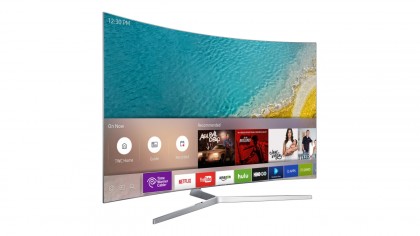
Home hub
Ever been watching a freaky horror film and felt the overwhelming urge to lock all the doors, but didn't want to lose face by jumping up and running to the front door, keys in hand?
With Samsung's 2016 range of SUHD TVs you'll be able to secure your home from the comfort of your sofa, using your remote – as long as you've got a host of SmartThings-connected home gadgets that is.
All Samsung's new SUHD TVs will feature an integrated SmartThings hub, giving you full access to over 200 compatible gadgets.
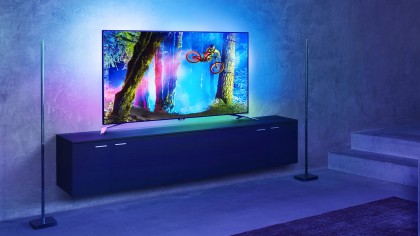
Philips: Ambilights all round
When it comes to Philips TVs it's all about the Ambilight technology. Initially it seemed like such a bizarre gimmick, but as the back-firing, wall-painting tech has become ever more advanced it's also become far more immersive.
The pinnacle of Ambilight is the Philips 8901 AmbiLux, which we first played with at IFA last year. It was in pretty limited production initially, but Philips recently announced that it will be making the TV more widely available.
Which is a very good thing, as the top-end telly packs nine pico projectors into its back panel, beaming a blurred extension of the image on the front of the screen. This creates an impressively immersive experience, almost making the bezel disappear.
It could be the ultimate gaming TV – although not the ultimate TV, because it's sadly lacking in HDR.
Philips' new 7000 series will bring entry-level HDR into the Android TV space, however, featuring a more standard three-sided Ambilight technology.
Philips is also promising that Amazon Instant Video will feature on its Android TV offerings, where previously only Sony's Google-powered TVs could boast the same streaming chops.
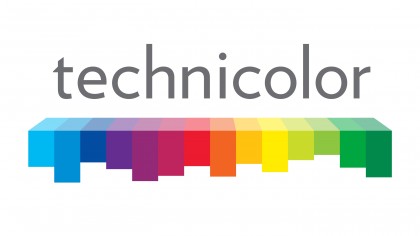
In glorious Technicolor
Where LG is throwing its lot in with Dolby, supporting its Dolby Vision HDR tech on its new OLED lineup, Philips is buddying up with industry stalwarts Technicolor. Originally Technicolor was working on its open-standard HDR tech alone, but it's now partnering with Philips on account of the Dutch company's consumer electronics pedigree.
Technicolor is still taking the lead in the actual development of the technology, which is backwards compatible with standard dynamic range, and we ought to see the first demonstration of the collaboration sometime this spring; commercial deployment could then happen before the end of the year.